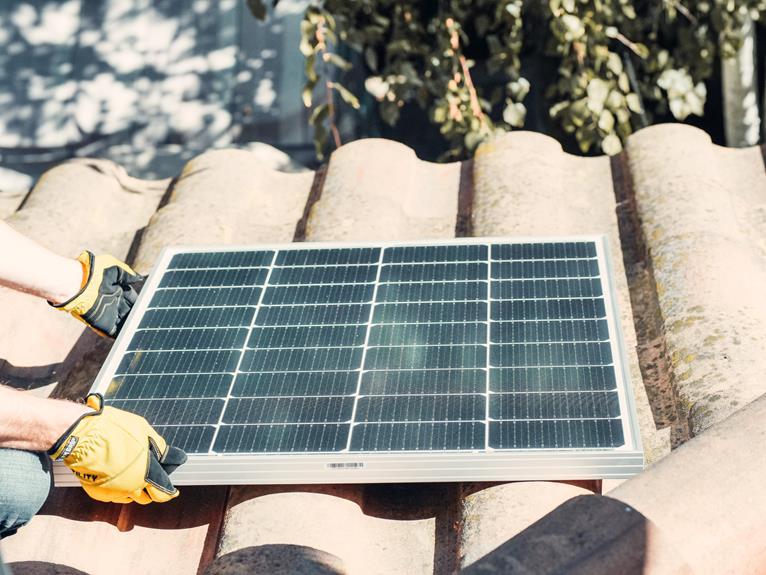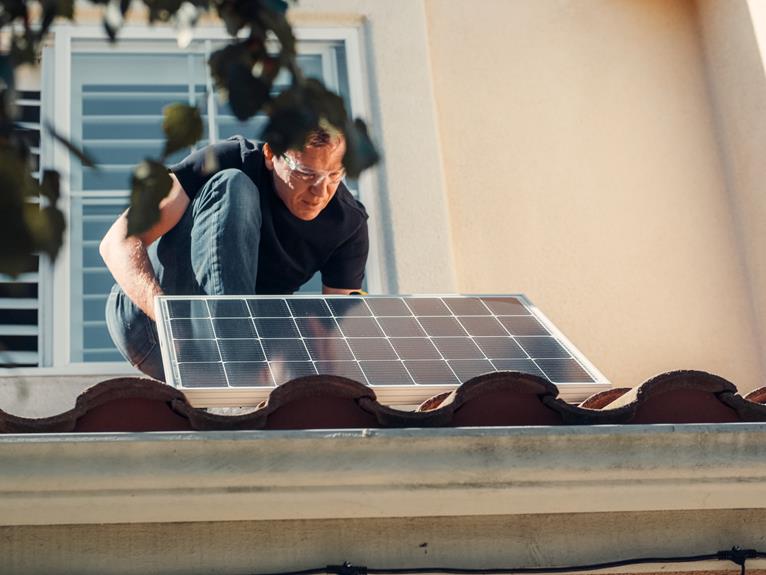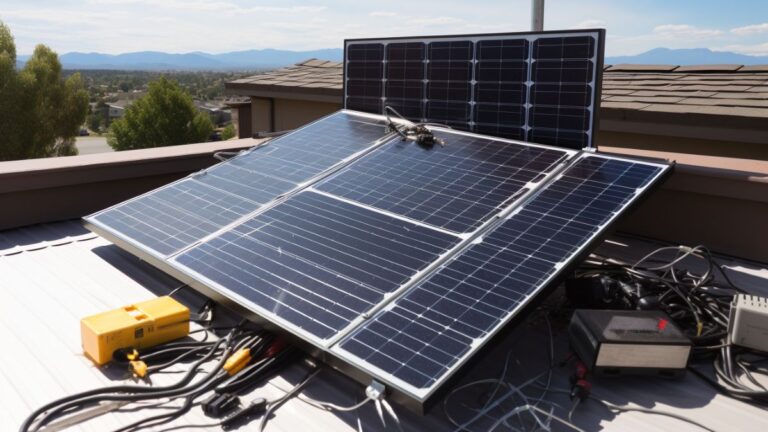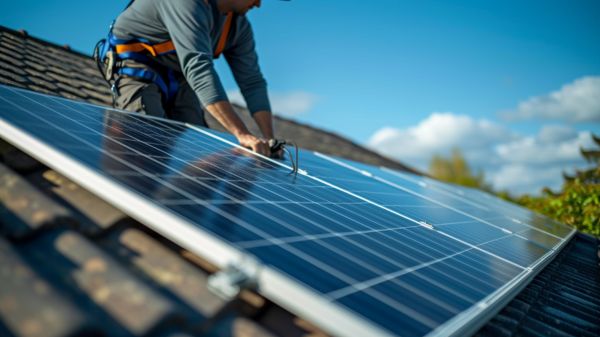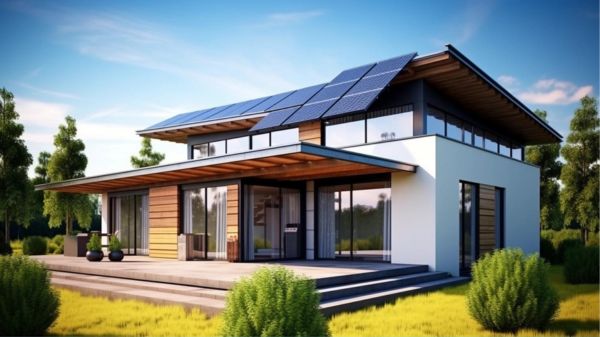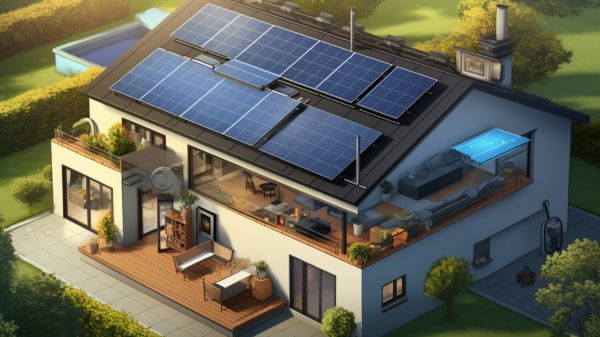Efficiently Installing Photovoltaic Cells on Your Rooftop
Are you ready to harness the power of the sun on your own rooftop? Discover the secrets to efficiently installing photovoltaic cells that will not only save you money, but also reduce your carbon footprint.
In this article, we will guide you through the process, from selecting the right cells to maintaining your solar power system. Take control of your energy future and join the growing community of eco-conscious homeowners.
Let’s get started!
Key Takeaways
- Prioritize photovoltaic cells with high efficiency ratings for maximum energy production.
- Consider cost-effective options that balance efficiency and affordability.
- Assess the rooftop for optimal sun exposure and evaluate potential shading.
- Ensure proper maintenance and monitoring of the solar power system for optimal performance.
Selecting the Right Photovoltaic Cells
Choose photovoltaic cells that are suitable for your rooftop installation.
When it comes to selecting the right photovoltaic cells, efficiency should be a top priority. Look for cells that have a high efficiency rating, as this will ensure that you get the most out of your solar system. Higher efficiency means that the cells can convert more sunlight into electricity, resulting in greater energy production and savings.
Additionally, consider cost-effective options that provide a good balance between efficiency and affordability. While high-efficiency cells may come with a higher price tag, they can also generate more electricity over time, making them a worthwhile investment.
It’s important to carefully evaluate the efficiency and cost-effectiveness of different photovoltaic cells to ensure that you choose the best option for your rooftop installation.
Assessing the Rooftop for Solar Panel Installation
To efficiently install photovoltaic cells on your rooftop, you should begin by assessing the suitability of your roof for solar panel installation.
This involves evaluating sunlight availability and analyzing the structural integrity of your roof. Here are two key factors to consider:
Sunlight Availability:
- Determine the orientation and tilt angle of your roof to maximize sun exposure.
- Assess any potential shading from nearby buildings, trees, or structures that could reduce sunlight reaching the panels.
Structural Integrity:
- Ensure your roof can support the weight of solar panels, mounting systems, and any additional equipment.
- Evaluate the condition of your roof to identify any repairs or reinforcements needed to ensure a secure and long-lasting installation.
Preparing the Rooftop for Photovoltaic Cell Mounting
Before beginning the installation process, ensure that the rooftop is adequately prepared for mounting photovoltaic cells. This involves conducting a thorough roof inspection to identify any existing damage or weaknesses that could affect the installation and performance of the solar panels.
It is crucial to address any issues before proceeding with the installation to avoid future complications. Additionally, depending on the weight and size of the photovoltaic system, structural reinforcement may be necessary to ensure the roof can support the added load.
This may involve reinforcing beams, trusses, or other structural elements. By taking the time to properly prepare the rooftop, you can ensure a smooth and efficient installation process, maximizing the performance and longevity of your photovoltaic cells.
| Preparation Steps | Benefits |
|---|---|
| Conduct a roof inspection | Identify any existing damage or weaknesses |
| Address any issues found | Prevent future complications |
| Evaluate the need for structural reinforcement | Ensure the roof can support the added load |
Wiring and Connecting the Photovoltaic Cells
To ensure proper functionality, wire and connect the photovoltaic cells according to industry standards and guidelines. Here are some important steps to follow:
Proper Grounding
- Install a grounding rod near the array to ensure electrical safety and protect against lightning strikes.
- Connect the grounding wire from each photovoltaic module to the grounding rod, ensuring a low-resistance path for stray currents.
Safety Precautions
- Before starting any wiring work, ensure that all power sources are turned off and the array isn’t generating electricity.
- Wear appropriate personal protective equipment, such as insulated gloves and safety glasses, to protect against electrical shocks and other hazards.
Ensuring Proper Maintenance and Monitoring of the Solar Power System
Maintain and monitor the performance of your solar power system regularly to ensure optimal efficiency. Efficient monitoring systems and regular maintenance checks are crucial for the long-term functioning of your photovoltaic cells.
By implementing efficient monitoring systems, you can track the performance of your solar power system in real-time, allowing you to identify any issues or inefficiencies promptly. Regular maintenance checks help prevent potential problems and ensure that your system operates at its highest capacity.
These checks involve inspecting the components, cleaning the solar panels, and assessing the integrity of the wiring and connections. Additionally, monitoring the energy output regularly allows you to assess the system’s performance and identify any areas for improvement.
Conclusion
In conclusion, your rooftop can become a beacon of renewable energy with the efficient installation of photovoltaic cells. Just like a vibrant flower reaching for the sun, these cells harness the power of sunlight to generate clean and sustainable electricity.
By carefully selecting the right cells, assessing your rooftop, preparing it for installation, and ensuring proper maintenance, you can embrace a greener future while enjoying the economic benefits of solar power. Take the leap and let your rooftop bloom with solar energy.
